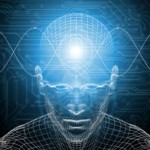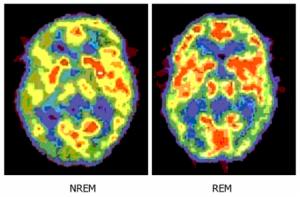 Dreaming or dreams have always fascinated me. What is this process? What are dreams? Most people would agree that they fly through our minds unremembered. The Austrian neurologist Sigmund Freud is best remembered for the analysis and work around the interpretation of dreams, associating most of them with some sort of sexual symbols expressing forbidden sexual urges hidden deep within our unconscious minds.
Dreaming or dreams have always fascinated me. What is this process? What are dreams? Most people would agree that they fly through our minds unremembered. The Austrian neurologist Sigmund Freud is best remembered for the analysis and work around the interpretation of dreams, associating most of them with some sort of sexual symbols expressing forbidden sexual urges hidden deep within our unconscious minds.
Exciting work has been done over the years in regards to brain research. In 1953, in an experiment where electrodes were placed on the heads of sleeping patrons, it was discovered that sleeping brains were not totally resting brains. Electrical activity of the brain seemed to show people were actually awake? Rapid eye movement during sleep termed sleep during this time as REM sleep. Further, people who were awakened during REM sleep seemed to remember their dreams.
The fascinating thing is that during REM sleep, your body is somehow via mother nature totally paralyzed so that you cannot act out your dreams while sleeping. As an experiment, researchers disabled the part of a cat’s brain responsible for paralyzing muscles during REM sleep. When the cat dreamed, it actually acted out it’s dreams while sleeping. The things a cat dreams about while in REM sleep seemed to be typical things a cat might do, such as scratching something or playing with a toy. If you were to see this cat acting out its dream, you would not realize the cat was actually sleeping. The behavior wasn’t random or chaotic. The behavior was what we would expect from a cat. Fascinating isn’t it?
Some people actually have what’s called REM sleep disorder which prevents the normal paralysis during REM sleep, and, they as well, if not controlled, end up acting out their dreams while sleeping.
Recent research has shown that not only do we dream during REM sleep but also during non-REM sleep. Studies from non-REM sleep has shown that dreams during this period help memory, and, in return, improve performance.
There are five stages of sleep as shown below.
Stage 1: Stage between wakefulness and sleep. Brain produces close together and spiky, high amplitude theta brain waves (5 – 10 min.)
Stage 2: Brain begins to produce rapid, rhythmic brain wave activity (~20 min.)
Stage 3: Transitional period between light sleep and a very deep sleep. Brain begins to produce slower brain waves.
Stage 4: Deep sleep where brain produces long and slow brain waves (~30 min.)
Stage 5: Deep sleep where brain produces long and slow brain waves. REM sleep occurs here and muscles become paralyzed.
Sleep does not progress through these stages in sequence. Sleep begins in stage 1 and progresses into stages 2, 3 and 4. After stage 4 sleep, stage 3 and then stage 2 sleep are repeated before entering REM sleep. After REM sleep, the body usually returns to stage 2 sleep. This cycle repeats four or five times in one night. One sleep cycle lasts about 90 minutes.
Like humans, rats have two types of sleep:
1. Non-Rapid Eye Movement (NREM) Sleep
2. Rapid Eye Movement (REM) Sleep
During REM sleep the pattern emerges, but the events aren’t compressed and are much more intense as if recreating the actual event. It’s as if the rat is actually experiencing the event all over again. Ever feel like that in a dream you’ve just woken up from and manage to remember! REM dreams can be five times longer than non-REM dreams.
Some scientists believe during non-REM sleep the brain analyses the past while during REM sleep the brain takes the data and tries to test scenarios of the future as if to condition our brain to make better decisions. REM sleep has also been linked to creativity. In one experiment using word game tests, it was shown that people who got REM sleep as compared to those who got just quiet rest or non-REM sleep scored 40% higher. Just imagine the possibilities if we could find a way to harness this ability of REM sleep and exploit it to its maximum potential!




 Twitter
Twitter LinkedIn
LinkedIn Youtube
Youtube RSS
RSS